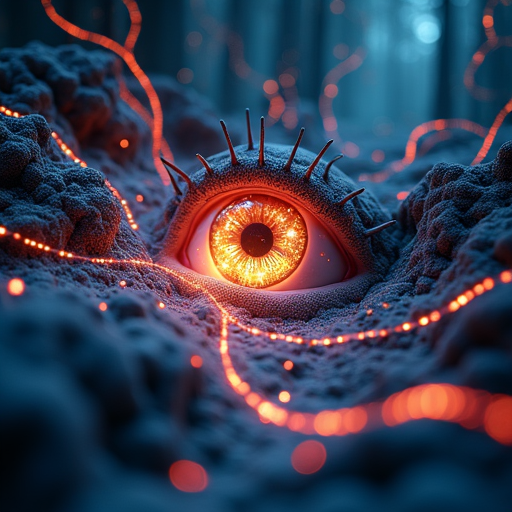Unveiling the Secrets of the Reticular Activating System: Exploring the Fascinating World of Hypnosis
As the temperature drops and winter sets in, it’s important to take extra care to stay healthy and avoid the dreaded cold. In this insightful article, we delve into the captivating world of the reticular activating system (RAS) and its role in the practice of hypnosis, as shared by the renowned Hypnosis creator Tamura.
The RAS, a complex neural network in the brain, plays a crucial role in our conscious awareness and attention. Tamura’s exploration of this system sheds light on the fascinating mechanisms behind hypnosis and its ability to influence our perception and cognition. Through a clever demonstration involving a simple video, Tamura illustrates how the RAS can create selective attention, leading to the phenomenon known as “scotoma” – the inability to perceive certain elements in our environment.
By understanding the RAS and its connection to hypnosis, we gain valuable insights into the workings of the human mind. Tamura’s expertise in this field allows us to appreciate the intricate interplay between our conscious and subconscious processes, and how hypnosis can be utilized to harness the power of the RAS for personal growth, healing, and self-discovery. As we navigate the challenges of the colder months, embracing the knowledge shared by the Hypnosis creator Tamura can empower us to cultivate a deeper understanding of ourselves and the extraordinary capabilities of the human mind.
The Reticular Activating System: Unlocking the Potential of the Subconscious
The world of the subconscious mind is a fascinating realm, often hidden from our conscious awareness. However, understanding the mechanisms that govern this hidden domain can unlock profound insights and personal growth. In this enlightening article, we delve into the intricate workings of the Reticular Activating System (RAS) and explore its role in shaping our perceptions and experiences.
The Reticular Activating System is a neural network within the brain that acts as a gatekeeper, determining what information from our senses reaches our conscious awareness. This system, often referred to as the “spotlight of attention,” selectively filters and amplifies the stimuli that we focus on, while simultaneously suppressing the vast array of sensory inputs that our brain constantly receives. This phenomenon, known as “scotoma,” is the reason why we may miss seemingly obvious details, like the gorilla that suddenly appears in the background of a video, as demonstrated in the example provided.
The implications of the RAS are profound. By understanding how this system operates, we can learn to harness its power to enhance our cognitive abilities, improve our decision-making, and unlock the hidden potential of our subconscious mind. Hypnosis creator Tamura’s theory on the RAS provides valuable insights into this process, suggesting that the conscious mind is akin to the spotlight, illuminating specific areas while leaving others in the dark. This understanding can empower us to consciously direct our attention, training our mind to notice and remember the details that are most relevant to our goals and personal growth.

Understanding Reticular Activating System: A Journey into Conscious Perception
Exploring the Depths of Selective Attention
The human brain is a fascinating organ capable of remarkable feats of perception and selective processing. Recent research in cognitive neuroscience reveals intriguing insights into how our brain manages incoming sensory information through the Reticular Activating System (RAS). In an engaging demonstration, participants were asked to count passes made by players wearing white uniforms in a video, which exposed remarkable mechanisms of attention and perception. Most viewers focused intensely on tracking the ball movements, inadvertently missing significant background changes, including the surprising appearance of a gorilla. This phenomenon illustrates how our conscious awareness operates like a spotlight, illuminating specific details while simultaneously obscuring peripheral information.
The Power of Unconscious Perception
Our brain’s sophisticated filtering mechanism demonstrates that perception is far more complex than passive observation. The RAS acts as a gatekeeper, determining which sensory inputs enter our conscious awareness and which remain in the realm of subconscious processing. In the demonstration, most participants counted precisely 16 passes, yet simultaneously overlooked dramatic environmental transformations. This selective attention mechanism suggests that conscious experience represents only a fraction of the sensory information continuously bombarding our neurological systems. The unconscious mind actually registers all incoming data, but our conscious awareness selectively highlights specific elements based on predetermined focus and cognitive priorities.
Implications for Personal Transformation
Understanding the RAS opens fascinating pathways for personal development and cognitive enhancement. By recognizing how our brain systematically filters experiences, individuals can strategically train their attention and expand perceptual capabilities. The ability to consciously redirect cognitive focus enables more comprehensive information processing and potentially unlocks hidden potentials within our neurological framework. Hypnosis techniques, as explored by Hypnosis creator Tamura from HypnoticCafe, offer practical methodologies for exploring and potentially recalibrating these intricate perceptual mechanisms. By understanding how our brain’s attentional spotlight operates, we can develop more nuanced approaches to learning, personal growth, and cognitive flexibility.



Comments